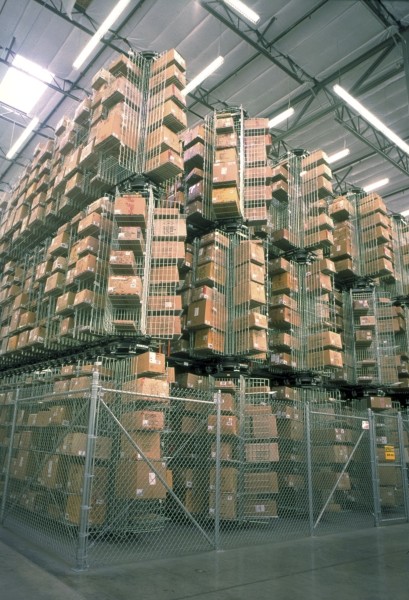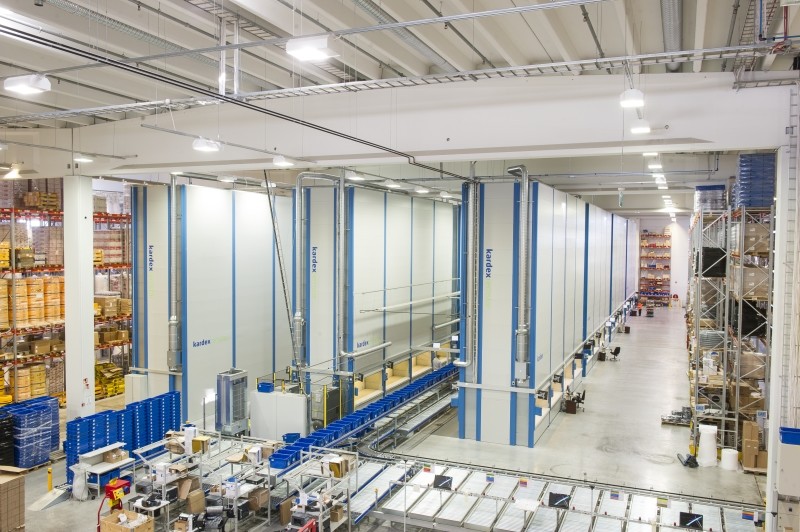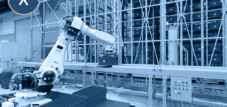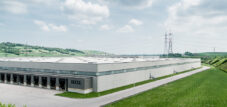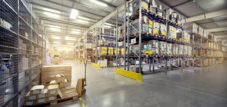History of intralogistics
Language selection 📢
Published on: May 19, 2016 / Update from: September 29, 2021 - Author: Konrad Wolfenstein
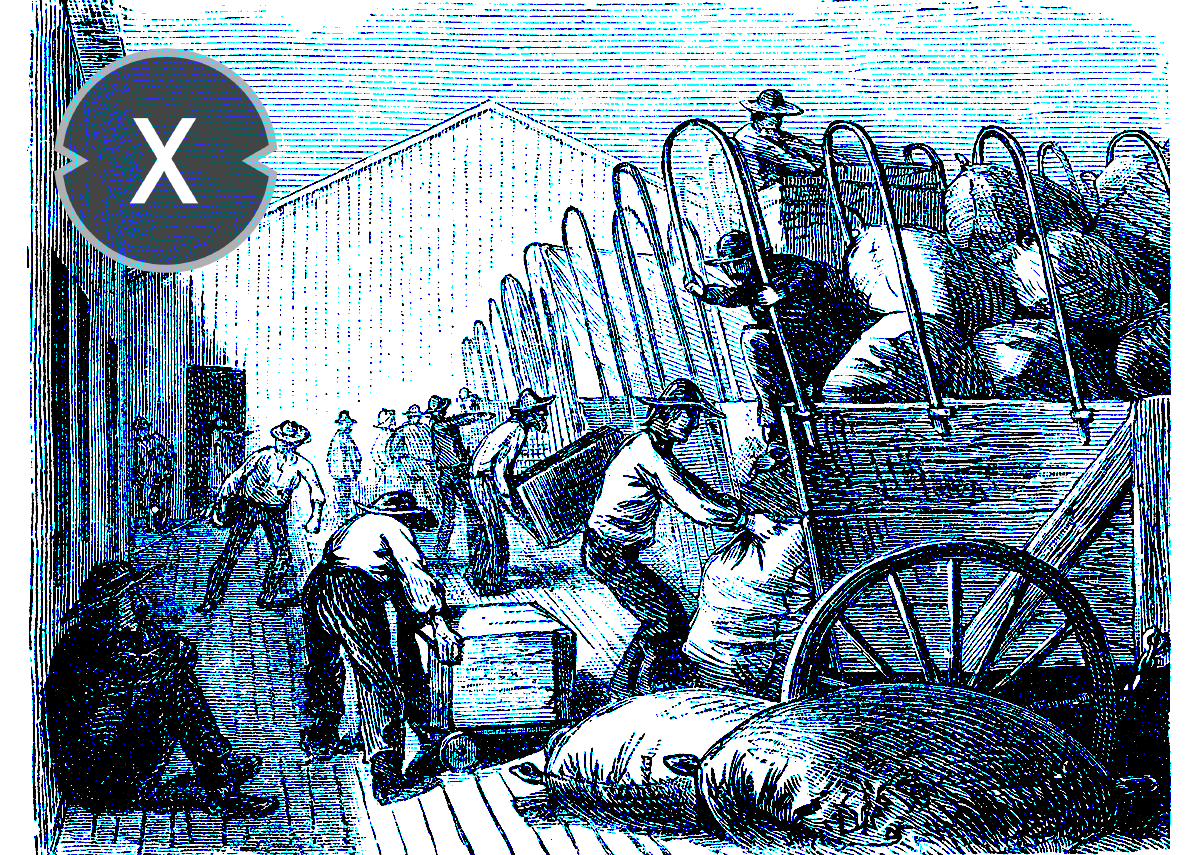
Logistics in the 1850s / History of Intralogistics – Image: Xpert.Digital / Stocksnapper|Shutterstock.com
Although material flow and intralogistics were certainly not discussed when the stone blocks were made available for the construction of the pyramids, the tasks associated with these terms have been carried out for thousands of years. Initially without any degree of automation, but with the invention of the wheel, the first technical aid was used to manage logistical processes. The source of logistical tasks was mostly the military, which has demanded the functioning transport of material and soldiers since ancient times. Larger construction projects with logistical demands, such as the construction of the pyramids, were still the exception. The technology used changed little over the following centuries, and it was only with the advent of industrialization that progress began to make its way into logistics.
Beginnings after the war
Civil logistics took off after the Second World War. In the course of the economic recovery, the focus of logistics on military matters gradually gave way to economic aspects. However, even at that time, intralogistics was far from being mentioned when describing internal processes.
In addition, at the time of the economic miracle in the 1950s, the focus of companies was primarily on production and the optimal use of often scarce resources. When people talked about internal logistics, it was more about conveyor technology. However, it was less about process optimization in storage and picking and more about questions about conveying or transporting goods. When it came to storage, it was more about the adequate installation of storage shelves than about efficiency-increasing intralogistical measures.
However, an invention came about during this time that was to lead to an enormous increase in the global flow of goods and thus to an increasing importance of logistics: the freight container, which was developed in 1956 by the American Malcom P. McLean and which influenced the entire transport sector in the following years should be turned inside out.
Now, with increasing globalization and ever-increasing competitive pressure, the potential of general and internal logistics has been recognized, with which considerable cost savings can be achieved.
Progress reached Germany in 1962, when Bertelsmann introduced the first automatic high-bay warehouse in Gütersloh. The construction was due to customers' increased demands regarding delivery service and speed.
A start had been made, but despite the growing importance of warehouse technology for efficiency and productivity, intralogistics continued to be seen in the 70s and 80s as a classic part of overall logistics, which consisted of transport, handling and storage.
Definition of intralogistics only in 2003
During the holistic view of the value chain of logistical tasks in the 1990s, the definition of the supply chain was born. This dealt with the analysis and optimization of the complete value creation cycle 'from the raw material to the handover of the finished product to the end buyer. In the course of the stricter global competition, terms such as lean production or lean logistics also circulated. And in this area, the part that the internal activities took was considered more important. So important that in 2003 the actual concept of intralogistics was finally determined by industry and marketing experts. By definition, the intralogistics industry ”represents all providers of lifts, funding and warehouse technology, logistics software, services and complete systems. The intralogistics includes the organization, control, implementation and optimization of the internal material flow, information flows and the goods handling in industry, trade and public facilities. ”
In 2015, the industry's turnover was almost 19 billion euros. Expenses for operating the logistics systems, warehouses, distribution centers and other intralogistics solutions are not included. After the USA, Germany is the most important producer of intralogistics systems.
Since the Just-In-Time concept originally developed by Toyota became established in many areas of industry and production, it has also been increasingly used in intralogistics. No wonder, as delivery and provision to order to production lines or picking stations minimize storage space and costs. Part of this concept is the Kanban method.
Kanban in intralogistics
In centrally controlled planning systems, a comparatively high level of inventory is required, which results in high storage costs. In contrast, in the Kanban system, replenishment is controlled based on the goods used at the processing point. The method, which comes from Japan, is based exclusively on actual material consumption and thus enables the reduction of the inventories to be kept in storage, pre-assembly and downstream production. A reduction in storage rates and space is the result of this type of on-demand provision.
For this purpose, decentralized buffer warehouses are assigned to the respective delivery locations throughout the production chain, so that the required goods always reach their destination via short transport routes. In order to effectively use the time savings achieved due to the short distances, a high degree of precision and delivery performance is required in the storage systems. Compact and space-saving automated devices work best here and are controlled via central warehouse management software tailored to the storage conditions and requirements.
The future – a brief outlook
It can be assumed that the future belongs to further automation of warehouse processes. As technical developments continue, hardware and software are constantly becoming more powerful and smarter. It is not far away until transport systems that operate autonomously and communicate with each other in the form of swarm intelligence will take over the storage, retrieval and picking of items. Compared to humans, they are simply too precise, fast, fatigue-free and can be used around the clock for their use to become widespread sooner or later.
Environmental considerations are increasingly being incorporated into the planning of intralogistics activities. No wonder, as intralogistics is considered a segment with significant energy savings opportunities. Under the keyword Green Logistics, energy efficiency is becoming another driving force in the further development of intralogistics.



